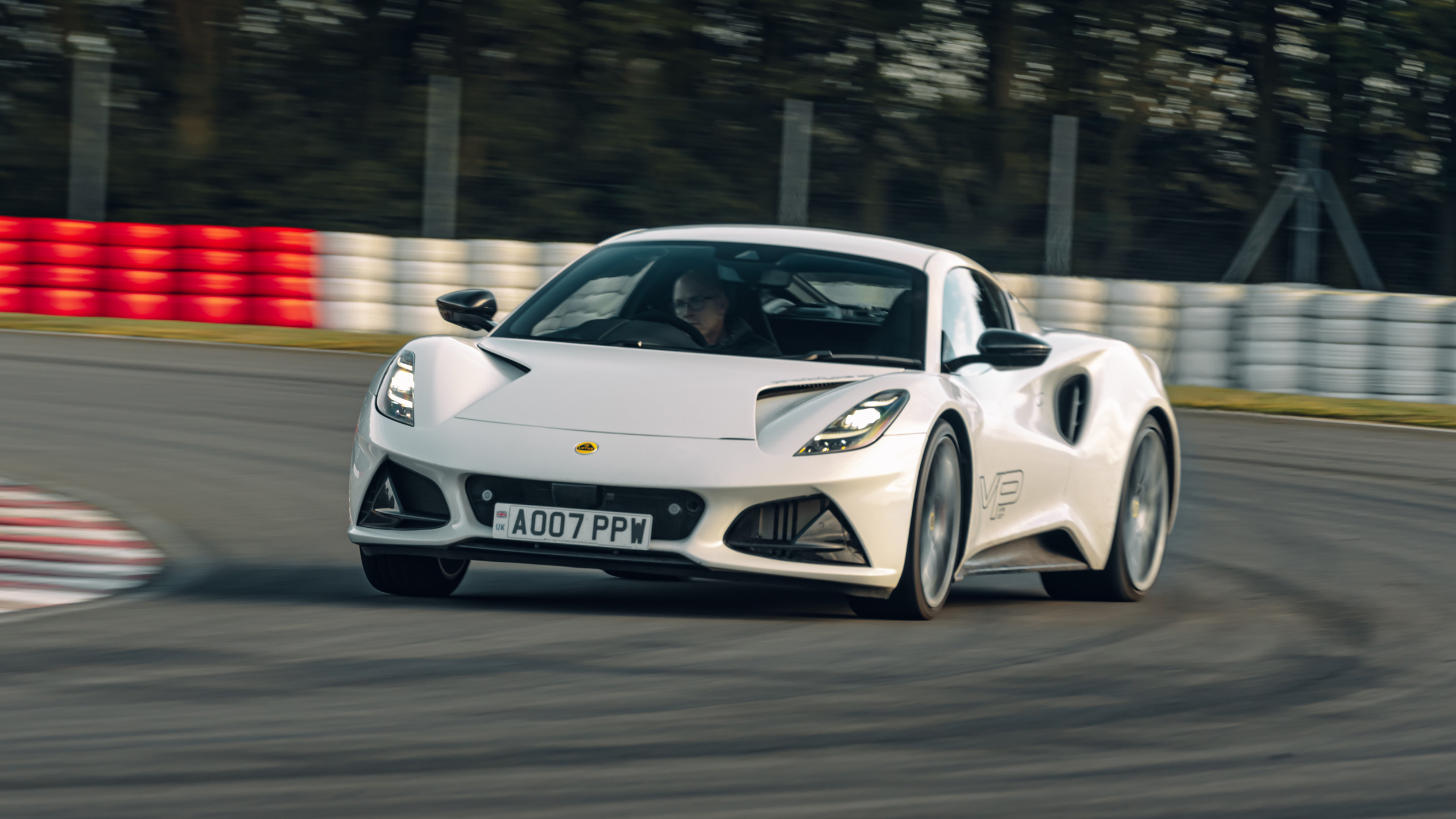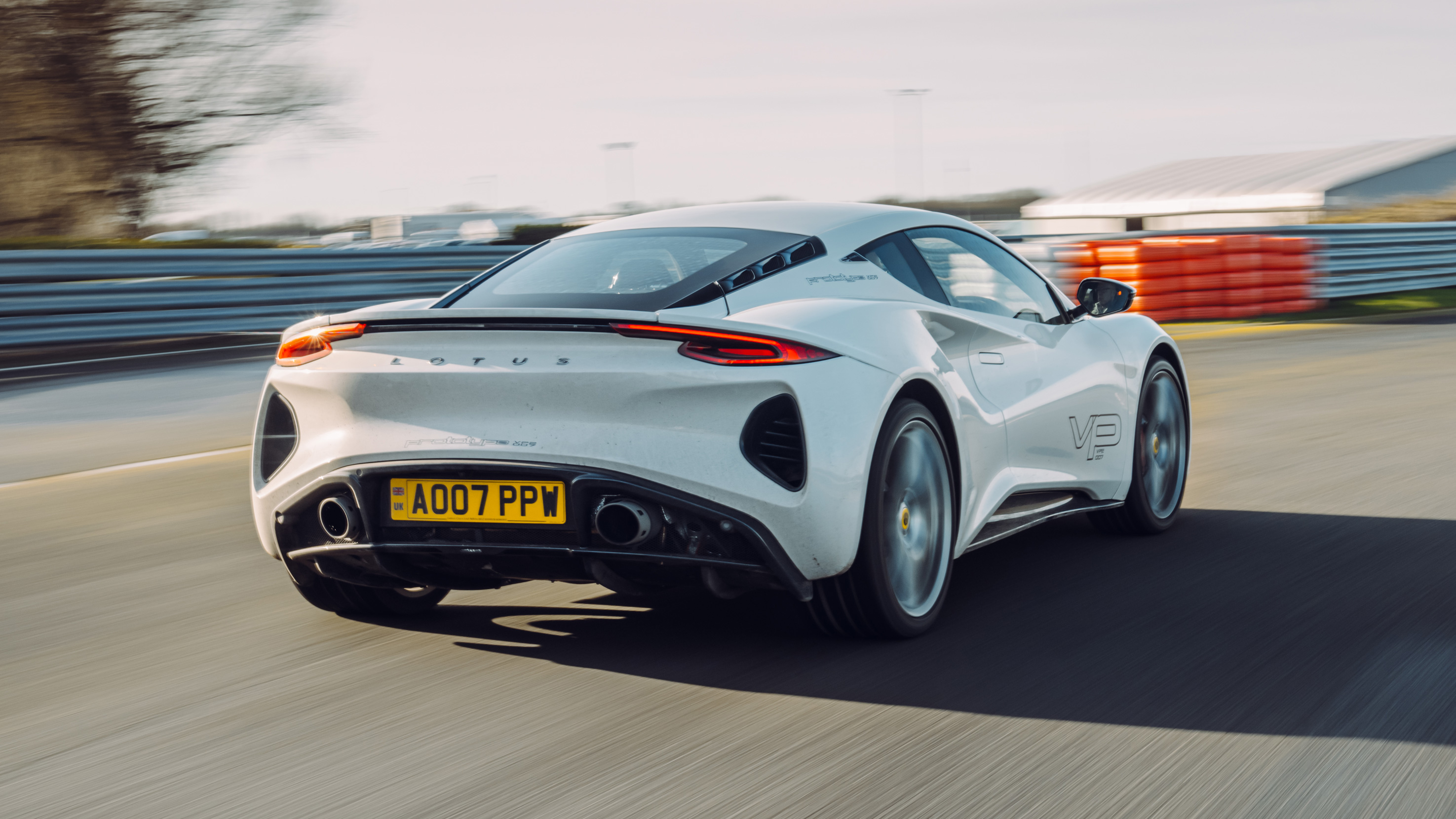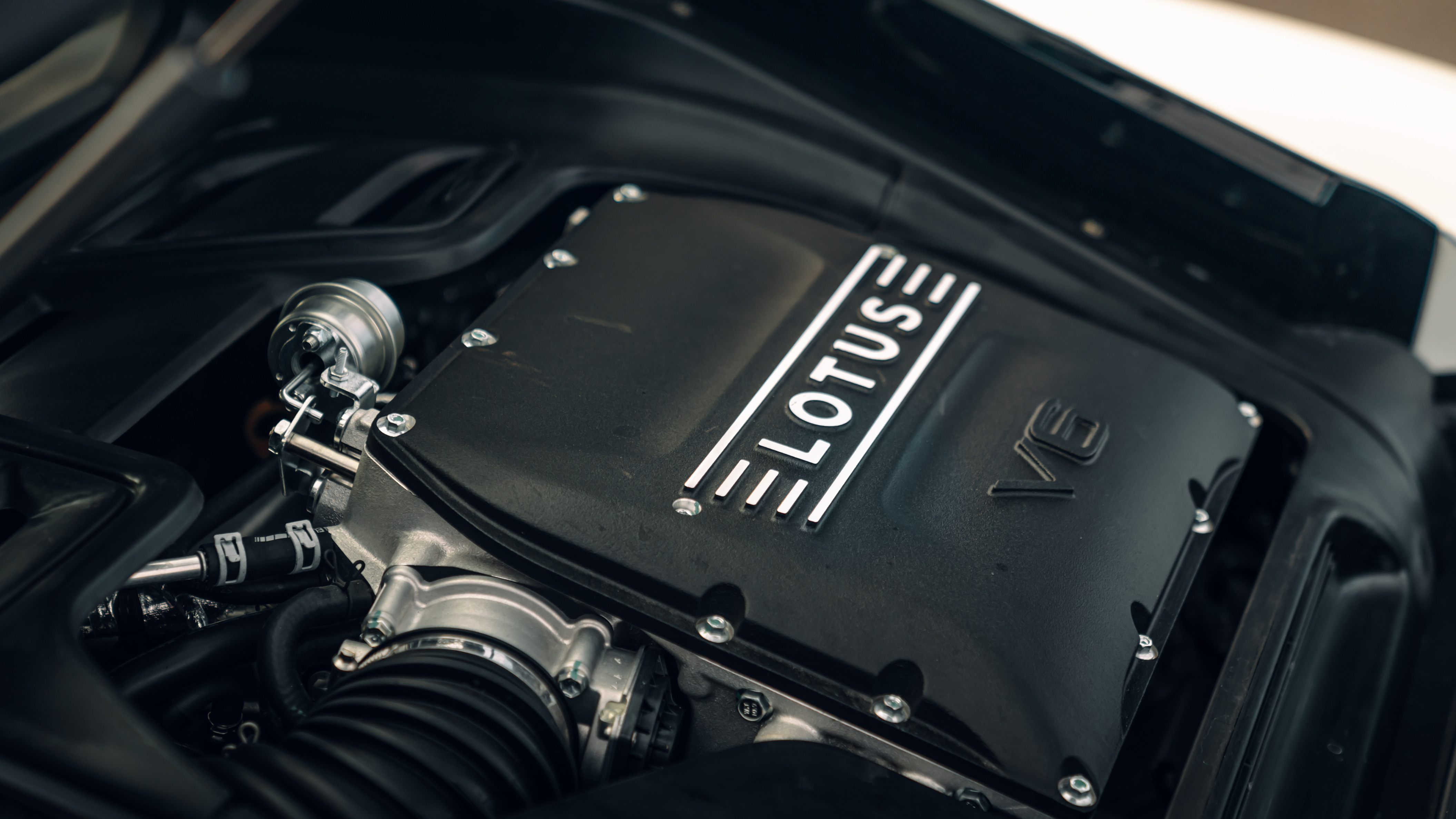
Lotus Emira review: what’s it like on track?
How track-focussed is the Emira?
Well, if ever there was an Emira that shouldn’t perform on track, here it is. This is VP-007 (d’you think they’re trying to tell us they see an Emira in the future of Britain’s favourite secret agent) and it’s the prototype that’s been used to hone the ADAS safety systems – yes, the Emira will be a Lotus with lane keep, blind spot warning and radar cruise. New territory.
So has the old territory been abandoned?
That’s what we’re here to find out. We’ve already discovered that even a raw pre-production Emira feels superb on road, but the track is where Lotus forged its name. Racing is in the blood, weight loss a religion, its reputation is built on chassis nuance and balance, steering and handling at the epicentre of everything.
So if this Emira, the anti-track Emira, a development car in full fun-sponge guise, performs on track we need have no fear for the production version.
What powertrain does it use?
Here’s a quick recap, but if you want much more detail, click on these words. Like the Evora and Exige before it, the Emira uses a bonded extruded aluminium chassis and a supercharged 3.5-litre V6. An AMG-sourced 2.0-litre turbo will be along to power the entry level car a bit later. There’s no hybrid – this is Lotus’s last blast with pure petrol. It’s 400bhp with 310lb ft, rear wheel drive and you have the choice of manual or automatic gearboxes. This one’s a manual. Yay.
I get in. That’s easy, the sill is narrow and you don’t have to hunch heads and hug knees to make it over the threshold. The standard seat’s a bit high. Blame the electric motors, "without them it could be 20mm lower", Gavan Kershaw (official job title Director, Attributes and Product Integrity, but mainly the man who makes a Lotus feel like a Lotus) tells me later and the steering wheel too chunky and un-round for a Lotus. Not sure what the thinking was there. The scuttle is low and the side window dished slightly downwards, so you can see the front arches, pick your point exactly, watch the road flow under your feet. It’s a much more habitable cabin than Lotus has done before.
Is that reflected in the driving?
I believe so, yes. The first thing you notice is that the drivetrain is better damped and less intrusive. Fewer mechanical rattles. Less general hubbub. The handbrake auto releases and I cruise around for a couple of laps, just getting a feel for the car and reminding myself where the track goes. It feels refined. Not just those noise levels, but lack of vibration and harshness. Like an Evora in its mannerisms, but quieter and more insulated, better finished. Closer to a Porsche.
This car, as you can read in Jack’s road drive, has the softer Tour chassis. The advanced order split is pretty much level between this and the firmer Sport. I’m already sure this is the one I’d have. This is a Lotus, it’s not soft or sloppy in any guise. Roll is there, but minimal and I wouldn’t want anything firmer on the road. It uses Goodyear Eagle F1s, where the Sport optionally runs Michelin Cup 2s. I ask Kershaw why not just use Michelin and have done with it. “Goodyear are being really aggressive in the market at the moment,” he tells me, “they’ve allowed us to really tune that tyre. I think we’ve been through 60 different iterations of the fronts, and 100 for the rear.”
Can you tell it’s still a prototype?
Yeah, there’s a fair few dynamic facets that need further fettling. The brake pedal is too soft and long, the hydraulic steering doesn’t yet have the sense of assured tactility and clarity I’m sure it’ll gain, the ride is missing the supple fluency Lotus is famed for. If it was almost anyone else you’d accept it and think it was ready to go.
It’s a useful glimpse into the development process though, “because it’s been testing the ADAS systems it’s had no need of the later ride and handling or powertrain updates”, says Kershaw, “dynamically this car is about four months behind where we are now”.
It's rapid, but not shockingly so. 0-62mph takes 4.3secs, top whack for the not-too-draggy 0.349Cd shape is an unlimited 180mph. Speed builds easily because the supercharger is so flexible and effortless, so you’re almost always travelling faster than you think and on road you’ll rarely have need to visit the 6,800rpm limiter. The hairpins that bracket either end of Hethel’s test track are second gear corners, but you can carry speed through in third and have enough punch to dig your way out because the Emira sweeps through corners, loaded up yet light on its feet, with real speed.
Top Gear
Newsletter
Thank you for subscribing to our newsletter. Look out for your regular round-up of news, reviews and offers in your inbox.
Get all the latest news, reviews and exclusives, direct to your inbox.
The gearing could be shorter but Lotus needs to balance sprinting with cruising economy. A manual gearbox, though. Happy days. The shift catches a bit at the moment. It’ll gain a narrower gate with exposed linkage for production. Nice aluminium pedals, although they’ll gain covers for production. An auto is £1,800, but you’ll lose every ounce of interactivity. The shift here is already clean enough not to cause issues.
I’m assuming the chassis, rather than the engine, is the star of the show?
Yeah, the V6 isn’t helped by the fact it’s not as charismatic as it once was. Regulations on exhaust noise and volume have stifled all combustion engines, so the wicked rasp has mostly been muted. Muscular powerband though, and it’s a better sprinter than any Cayman this side of the latest GT4 RS, all of which have manuals saddled with daftly long gearing.
Fun detail: you can see the throttle linkage working in the rear view mirror. In a Porsche Cayman the engine is buried, here it’s taller and visible, so you’d imagine the centre of gravity is high. That’s a bit misleading, the supercharger gives this engine height. But yes, in an Evora you do eventually get to a point where you can detect its effects with a suggestion of roll oversteer at the rear. The Emira’s track widths are up about 50mm, helping the chassis negate the engine’s mass. No roll oversteer now, it’s crisp and keen into corners.
The Hill esses are my favourite part of the circuit. Unlike the Senna esses on the opposite side you can’t take them flat, you need to lift and adjust the balance. Something this car loves to do. We can’t slacken VP-007s stability systems, so it won’t execute lurid slides, but that’s fine because it’s not a Lotus trait.
Why can’t you disable the traction?
You will be able to on production cars, but this one is something of a development hotch-potch. But that didn’t lessen enjoyment too much. Even with stability on you can work the chassis hard, feel how responsive it is to throttle position, how eagerly it changes direction. This is surreptitious traction management. I’m barely aware it’s cutting in at all, I can’t feel it nibbling away to reduce over-ambitious turn in, nor does it interfere with traction on the way out. The differential seems to be giving its all. At the end of the day the tyres are toast, yet I don’t feel I’ve been reined in. Impressive how well it plays at the limit, how friendly and approachable it is.
There is some understeer when the tyres are hot and confidence high, for me a little more than ideal but not so much that I’d want the Sport chassis and grippier Michelins if this was my daily driver.
It’s happiest just below the limit. There it already feels effortless, moves gracefully. At the limit, well, the screen graphics suggest that on these tyres and with traction on it can still pull a mighty 1.3g.
Has it got you excited for the production version?
More than a little. I don’t doubt some tuning is required, but the Emira already feels like a Lotus capable of carrying the traits we love forwards, while convincing us it has what it takes to rival Porsche and give the whole firm a brighter future.
It's pushing at an open door of course. We know cars like this have an expiry date. The pity is that what replaces them won’t be able to replace the sensations the Emira delivers. Get one while you can.
Photography: Mark Riccioni
Featured

Trending this week
- Car Review
BMW 1 Series






